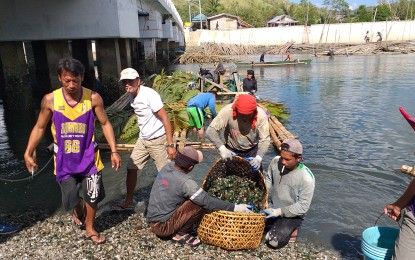Samareños living along Irong-Irong Bay are advised to avoid eating shellfish from the area following a local red tide warning issued on the bay by the Bureau of Fisheries and Aquatic Resources (BFAR).
Seawater samples from the bay, which covers the area of Catbalogan City, Samar's capital, indicate the presence of red tide toxins, BFAR reported on Wednesday, July 2.
The bay is the second area in the region included in the latest local red tide warning issued by the fisheries bureau.
“No area in the region is under shellfish ban. However, filtered seawater samples collected from Irong-Irong Bay remain positive for pyrodinium bahamense, a dinoflagellate that produces red tide toxin,” BFAR said in a statement.
The public is advised to refrain from gathering, selling, and eating all types of shellfish and Acetes sp., locally known as "alamang" or "hipon," from the bay to avoid possible paralytic shellfish poisoning.
Fish, squid, shrimp, and crab from these waters are safe to consume as long as they are fresh, and their internal organs such as intestines and gills are removed and thoroughly washed.
In the first week of June, BFAR raised a local red tide warning in Matarinao Bay that covers the coastal waters in the towns of General MacArthur, Hernani, Quinapondan, and Salcedo in Eastern Samar province.
Although the shellfish ban has been lifted in all areas in the region, the monitoring will continue to check possible recurrence.
Included in regular water sample checks are the coastal waters of Daram, and Zumarraga, Cambatutay, Maqueda, and Villareal Bays in Samar; coastal waters of Guiuan in Eastern Samar; San Pedro Bay in Samar; coastal waters of Leyte, Calubian, Ormoc, Sogod, Carigara Bay, and Cancabato Bay, Tacloban City in Leyte; and coastal waters of Biliran Island.
(With report from PNA)
#WeTakeAStand #OpinYon #OpinYonNews
